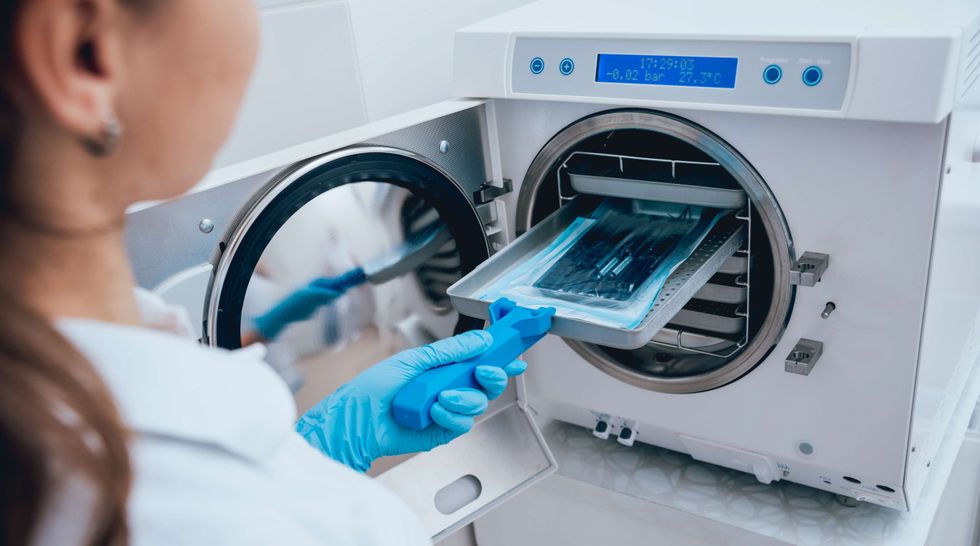If you're working with liquids in any kind of system, such as industrial, medical, or chemical setups, you need a pump you can rely on. Diaphragm pumps offer a dependable way to move fluids with control and safety. They handle everything from delicate lab samples to thick chemical mixtures.
Understanding how these pumps work helps you choose the right one and use it properly. This article explains the basics so you can get the best performance from this essential equipment.
What Is a Diaphragm Pump?
A diaphragm pump is a positive displacement device that moves fluid using a flexible membrane. Unlike pumps with spinning impellers or seals, this one uses motion to create pressure and flow.
You’ll find diaphragm pumps used across many industries, from wastewater treatment to medical applications. These pumps are versatile, efficient, and built to last.
For critical applications like medical dosing or laboratory fluid handling, it helps to rely on trusted solution providers. Sites like knf.com/en/uk offer diaphragm pumps engineered for precision, safety, and the specific demands of medical and diagnostic environments.
Core Components
Each diaphragm pump relies on a few essential parts working together to move fluid efficiently.
- Diaphragm: A flexible membrane, often made from elastomeric diaphragm materials like rubber or polytetrafluoroethylene (PTFE). It serves as the moving barrier that separates the pumped fluid from the drive mechanism.
- Check valves: These one-way valves at the inlet and outlet regulate flow direction. They open and close in response to changes in pressure, preventing backflow.
- Pump housing: This supports and protects internal components. It encloses the pumping chambers, drive mechanism, and outlet ports, helping maintain a sealed and stable structure.
Each component plays a specific role in helping the pump operate cleanly, safely, and with minimal maintenance.
Basic Principle in Action
The diaphragm pump operates through a simple two-phase cycle.
During the suction phase, the diaphragm pulls back and creates a vacuum. This draws fluid into the chamber through the suction manifold, while the outlet valve remains closed.
In the discharge phase, the diaphragm pushes forward, building pressure that forces the fluid out through the discharge manifold. At this point, the inlet valve shuts to maintain one-way flow.
This steady reciprocating action produces a consistent pumping action with minimal shear or turbulence. That makes the pump well suited for fluid transfer involving delicate, abrasive, or reactive materials.
Types of Diaphragm Pumps
Diaphragm pumps generally fall into two main categories, each suited for different applications:
- Air-operated double diaphragm (AODD) pump: This type uses compressed air to move the diaphragms. It's ideal for flammable or hazardous environments because it doesn't require electricity, making it safe and portable.
- Mechanically driven diaphragm pump: This model uses a motor and crankshaft to create consistent diaphragm movement. It’s preferred in systems that demand precision, such as automated lines or high-volume production setups.
Choosing between them depends on your application, environment, and flow requirements. Each type offers distinct advantages depending on the fluid characteristics, installation setup, and control needs.
Why Diaphragm Pumps Stand Out
Diaphragm pumps are valued for their performance and versatility. They handle thick slurries, abrasive chemicals, and even solids without damage.
They can run dry for short periods without harm, and their self-priming feature makes them user-friendly. Materials like stainless steel are often used for housing in applications that demand durability and chemical resistance.
Thanks to their seal-less design, they minimize leaks and are easy to maintain. Whether you’re dealing with basic water or complex chemical mixtures, these pumps adapt well.
Common Uses and Industries
These pumps show up in a wide range of environments. In food and beverage production, they help move sauces, flavorings, and concentrates without contamination.
In chemical processing, they handle acids, solvents, and other reactive substances with care. In labs and clinics, their precision makes them ideal for medical dosing, fluid sampling, and even autoclave systems, where specialized pumps remove air quickly and manage hot, moist conditions during sterilization.

The pump’s gentle action and dependable flow make it a smart choice for manufacturers that need safe, clean, and reliable movement of materials.
Tips for Getting the Most Out of Your Pump
To ensure long-term performance, follow these practical tips:
- Install it properly: Make sure all connections are secure, especially around the inlet and discharge piping, to prevent leaks or flow issues.
- Match materials to your fluid: Use diaphragms and check valves that are compatible with the chemical makeup of your liquid. This extends pump life and ensures safe operation.
- Perform regular inspections: Listen for unusual sounds, check for leaks, and monitor wear on internal components. Catching small issues early prevents major failures.
- Monitor the membrane pump: If the flow becomes inconsistent, you may need to replace the diaphragm or valves. A proactive approach reduces costly repairs and unexpected downtime.
These simple practices help keep your pump running reliably while reducing downtime.
Final Thoughts
Understanding how diaphragm pumps work helps you make smarter choices in both selection and operation. With a simple but effective design, these pumps offer power, safety, and adaptability.
Whether you're working in a factory, a lab, or a field site, this pump delivers dependable performance with minimal fuss. And when you're working with demanding materials, choosing the right pump from the start will always pay off.

















